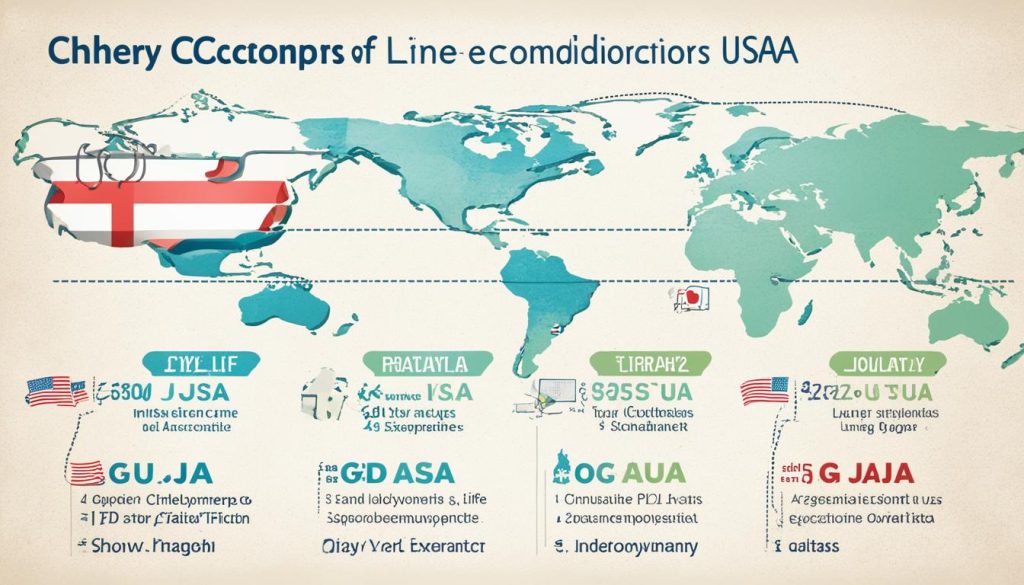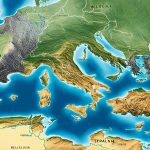Seeking a better life is common across the world. Delving into how countries like Japan, Italy, and the USA stack up on finances and living standards is eye-opening. It shows how each place’s unique economic plans and cultures shape the happiness of its people.
When looking at these three leading economies, it’s crucial to weigh various elements. Factors include healthcare, education, infrastructure, and rule. This review aims to deliver a fair outlook on what each country does well and areas needing improvement. This helps make choices that are based on facts and real-life happiness indicators.
Introduction to Comparative Analysis
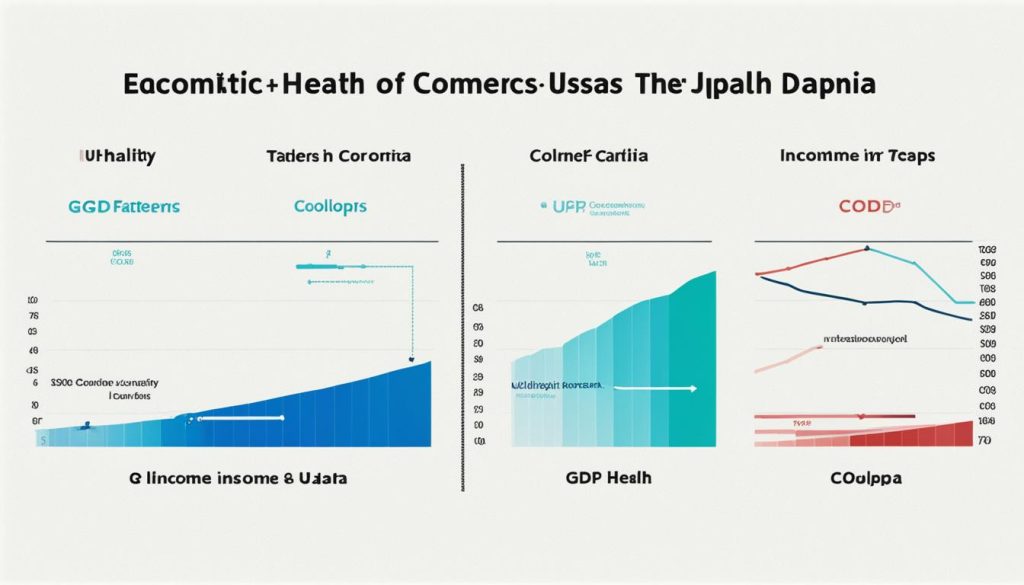
We explore the complex world of country comparison here. We look at living standards and economic health in Japan, Italy, and the USA. We consider their populations, healthcare, infrastructure, and environment to find differences and similarities.
Our study goes beyond just numbers. We dive into how culture, politics, and laws affect life and decisions in these countries. We show how each country’s culture, tourist sites, language, and religion make it unique. This helps us understand what makes a country good to live, work, and invest in.
- Population comparisons show the life and energy of each society.
- The state of healthcare systems shows how well nations look after their people.
- Infrastructural development gives clues about what a country values.
- Environmental efforts show a country’s care for the future.
We use trusted sources for our analysis, focusing on living standards. We look at how tourism, art, language, and religion contribute to country comparison.
- Political and legal structures reveal how countries are run.
- Cultural and linguistic aspects influence opportunities and challenges.
- Religion impacts how people interact and live together.
This broad approach helps us give a deep analysis. It allows us to evaluate the economic health of these important countries thoroughly.
Overview of Japan, Italy, and the USA

Looking at Japan, Italy, and the USA shows us their unique traits and similarities. Each country stands out due to its own geopolitical, cultural, and governmental features. Together, they paint a diverse picture on the world stage.
Geographical and Cultural Context
Japan, Italy, and the USA each have unique geography and cultures. Japan is known for its precision and traditions, shaped by years of isolation. Italy celebrates its rich art, food, and history, linked to Europe’s diversity. The USA is a mix of cultures, reflecting its immigrant history.
Political Structures and Government Forms
The way each country is governed is quite different. Japan combines a constitutional monarchy with parliamentary democracy. Italy’s government is shaped by its parliamentary republic and varied political landscape. The USA, with its federal republic, has a complex system of state and federal laws.
Population Dynamics and Demographics
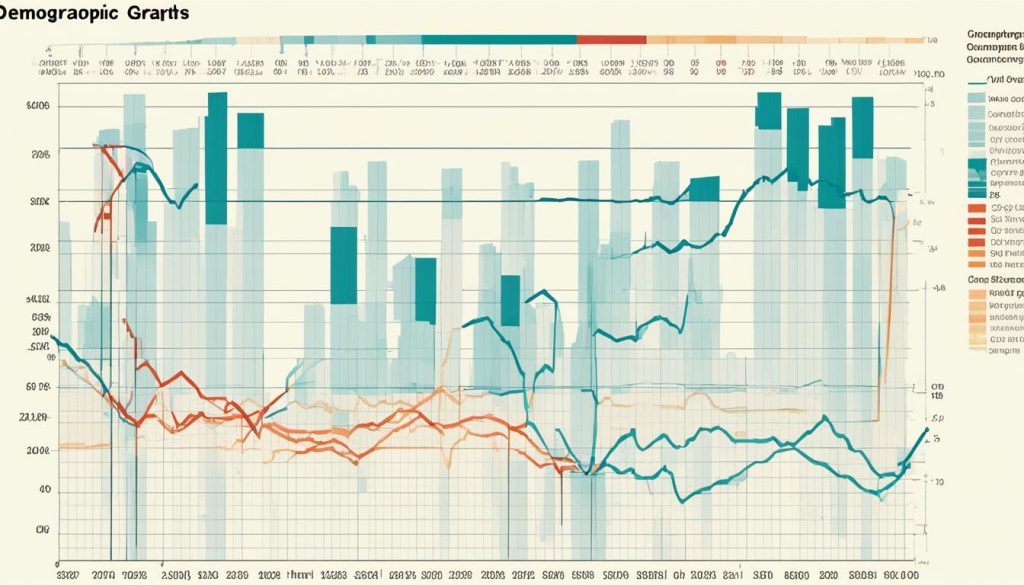
Getting to grips with demographic analysis is key to understanding a country’s societal makeup and economic possibilities. It sheds light on population trends and vital age distribution data. These aspects are crucial for shaping policies and market dynamics. A deep dive into the demographics of Italy and Japan shows patterns that matter to economists, healthcare professionals, and urban planners.
Italy boasts a population nearing 59 million, showing a stark contrast to Japan’s bustling 125 million plus inhabitants. Japan’s dense population means about 331 people per square kilometre. This figure is nearly double Italy’s 195.6. Such numbers have big effects on urban planning and how health and education services are spread out.
- Italy – Population: ~58,940,000
- Japan – Population: ~125,125,000
- Population Density:
- Italy: 195.6 inhabitants per km²
- Japan: 331 inhabitants per km²
- Median Age Indication:
- Italy: High life expectancy with a mature age distribution
- Japan: Slightly higher median age reflecting robust elder care
Looking closer at age distribution shows more differences. Japan’s average age is higher, hinting at better healthcare and social systems for a longer life. These age details change consumer markets, social values, and jobs. Meanwhile, the USA’s diverse demographics display many ethnicities and younger ages, adding to the global population trends picture.
In summary, Japan and Italy’s unique age and population structures deeply impact their economies and societies. It gives those making policies and investments a lot to think about, when considering each country’s demographic puzzles and chances.
Assessing Quality of Life Indicators
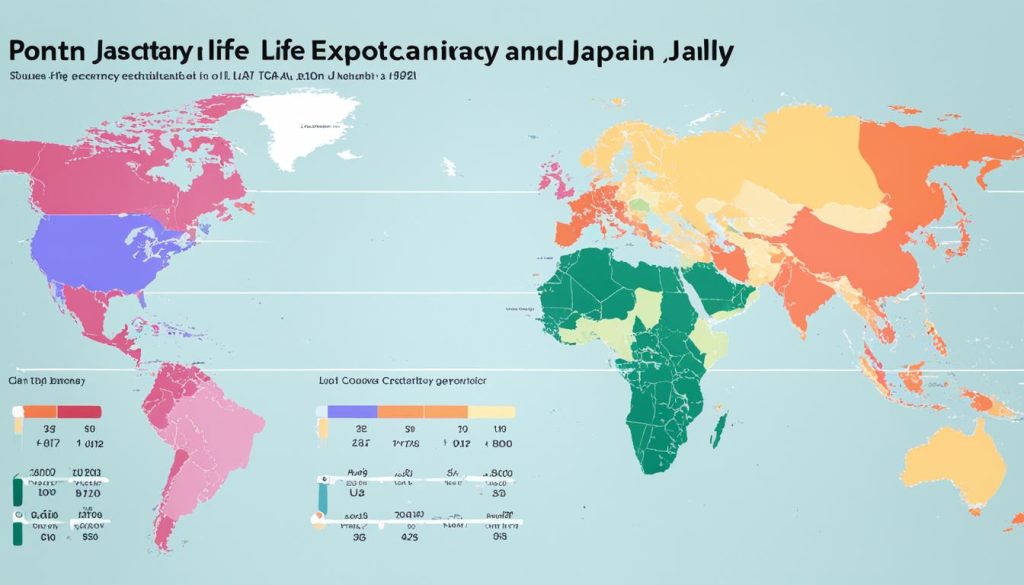
When we look at the quality of life in different countries, we focus on life expectancy and birth/death rates. These metrics tell us a lot. They show how healthcare, social policies, and the economy are doing. Together, they paint a clear picture of how well a society is doing.
Life Expectancy and Age Distribution
In Japan, the average life expectancy for women is about 88 years. This highlights the strong healthcare and focus on wellness. Italy is also doing well in this area. Both countries have people living longer, showing an ageing population. This means there’s a need for good support systems for older people.
Birth and Death Rates
Italy and Japan have low birth rates, which is common in developed countries. It reflects changing priorities in culture and economy. The death rates, although slightly different, add to the story of these populations. They offer insights into how these countries are evolving.
Looking at these indicators helps us understand the progress and challenges of societies. It gives us a full view of a nation’s health and wealth.
Comparing Economic Stability
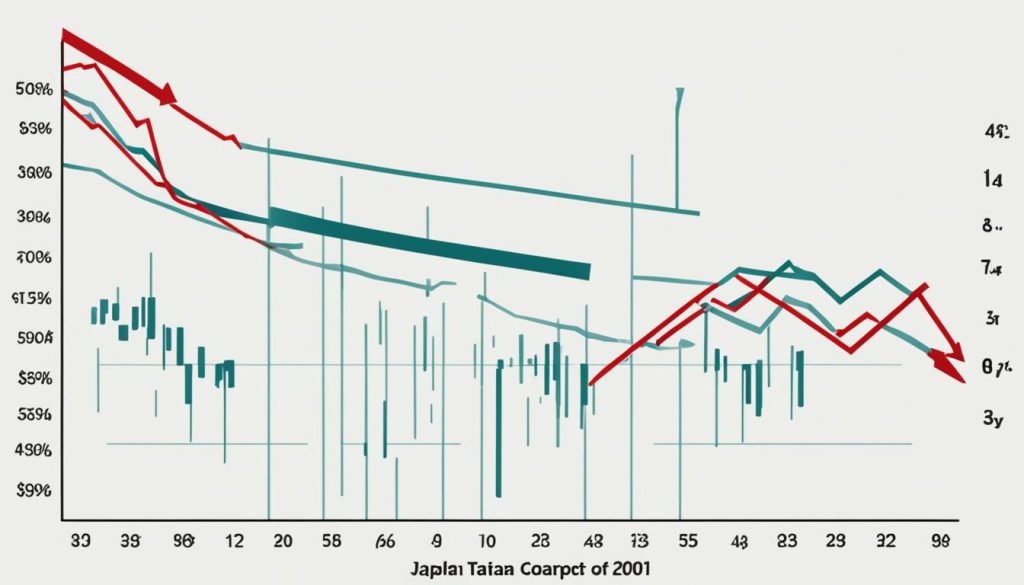
To understand a country’s economic health, we look at important signals like growth and strength. By comparing these signs, we learn how different and alike countries are in their economy. This helps us get a clearer picture of how they are doing.
Unemployment Rates and Inflation
The job market is key to a country’s wealth. Checking unemployment rates tells us a lot. For instance, Japan’s unemployment rate is just 2.6%. This is much lower than Italy’s 8.1%. This difference shows how well each country is doing at keeping people in work.
Different rates of inflation also tell us about a country’s economy. Italy’s inflation is higher than Japan’s. This means the cost of living and how much things cost are quite different. It affects how much people can buy and the country’s economic growth.
Gross Domestic Product and National Debt
GDP shows how much a country’s economy produces. Japan and Italy, despite their big economies, face debt challenges. Japan’s high debt hasn’t stopped it from being a leading economy. This shows managing debt and keeping growth can go hand in hand.
Macroeconomic measures are vital for everyone to judge a country’s financial health and future prospects. Comparing these to the USA’s economy highlights each country’s unique strengths and the ability to overcome challenges.
Evaluating Healthcare Systems
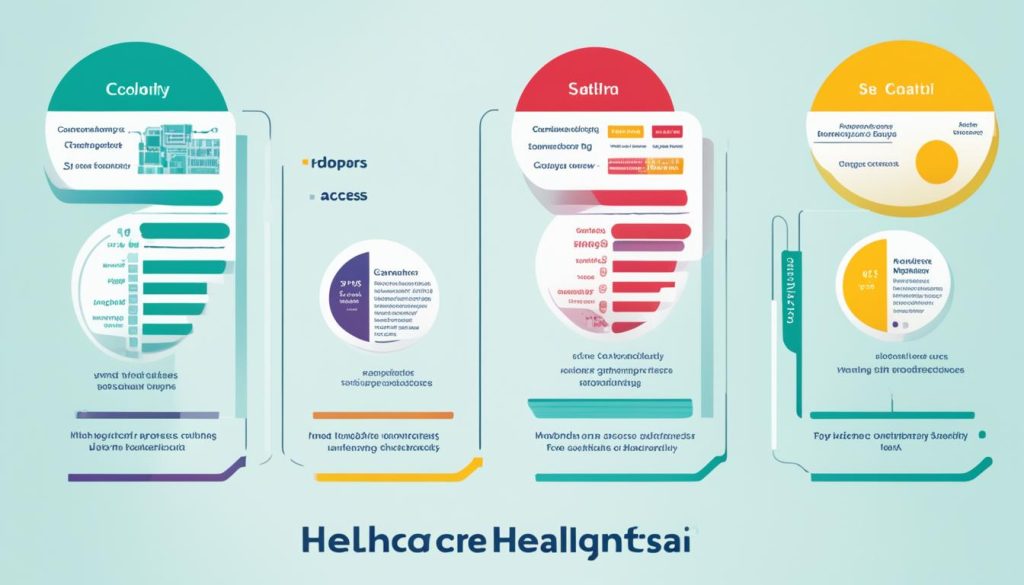
Exploring healthcare systems in Japan and Italy involves looking at key aspects that define their quality. These include how many medical facilities there are and if healthcare professionals are readily available. Both parts are crucial for providing quick and excellent care to people.
Hospital Beds and Physician Availability
In Japan, the healthcare system is well-supported by a large number of hospital beds for every 1,000 people. This shows Japan’s strong commitment to health. Meanwhile, Italy has a high number of doctors compared to its population. This suggests it might be easier to get primary care in Italy.
- Japan’s robust medical infrastructure manifests in an expansive availability of hospital beds.
- Italy’s healthcare system is bolstered by a notable physician density offering greater primary healthcare access.
Health Conditions Prevalence
Looking at health issues like HIV, tuberculosis, diabetes, and smoking presents an understanding of public health issues. It tells us about the health challenges in Japan and Italy. It also shows how their healthcare systems are dealing with these issues.
- Analysing the impact of healthcare infrastructure on the management of chronic health conditions.
- Quantifying the success of healthcare quality improvement initiatives in the face of public health challenges.
Analyzing Infrastructures

The strength of a nation’s infrastructure shows how well it’s doing economically. Italy and Japan offer excellent examples with their impressive systems. These systems affect their people and economies greatly. We’ll look at transport and energy sectors to see their complex yet advanced nature. This will show us why such setups are key for public services and societal growth.
Transportation Networks
Italy and Japan take pride in their transport. Italy has beautiful roads, while Japan’s trains are always on time. Japan’s Shinkansen trains are at the forefront of technology, offering dependable journeys. Italy’s roads boost tourism and goods movement.
This focus on transport supports economic activities. It makes life better by cutting travel times and making key services easier to reach.
Energy Production and Consumption
Looking closely, we see Japan leading in energy use and production. This highlights its industrial needs and the demands of its crowded cities. Both nations are moving towards greener energy. They’re adapting to meet global environmental challenges.
This effort in maintaining these sectors shows how vital strong infrastructure is. It’s crucial for economic growth and improving our lives.
Telecommunication in Japan, Italy, and the USA

Diving into the world of digital connectivity, we see how vital telecom infrastructures are in Japan, Italy, and the USA. These networks are crucial for modern economies, changing how we communicate and access information instantly. Internet stats and mobile telecom show us how societies move forward and embrace the digital age.
Internet and Broadband Penetration
Looking at internet use, the emphasis on broadband penetration highlights the need for fast digital connections. Japan and Italy are seeing more broadband users, showing their efforts to boost internet infrastructure. This makes the digital identity of these countries stronger in the global scene.
As societies become more connected, access to high-speed internet opens new doors for business, learning, and self-improvement. Japan leads in internet speed, but the USA and Italy are not far behind, investing heavily to catch up. Now, using the internet is a daily thing, from Tokyo’s busy life to Rome’s historic streets.
Mobile Cellular Subscriptions
Mobile telecommunication also plays a big role in today’s world, with more people using mobile devices than ever. Japan is doing well in covering its nation with mobile networks, showing how much they value staying connected. Italy too is improving its mobile networks to boost digital connections everywhere.
In the USA, the focus is on a competitive market and new technologies to grow mobile and internet access. People now rely on their smartphones for almost everything, pointing to a trend of living digitally on the move.
Quality of Living: Climate Conditions
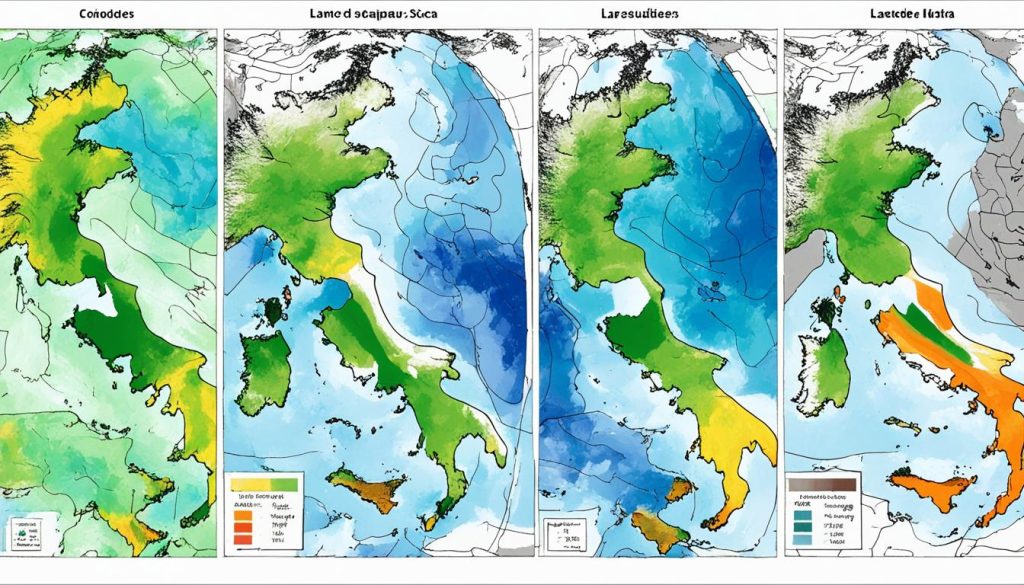
The link between climate and how well we live cannot be ignored. Changes in weather patterns greatly influence our daily lives. Italy and Japan are known for their appealing climates. However, they have different temperature and rainfall patterns. This makes them attractive to different people, whether they live there or are just visiting.
Daytime and Nighttime Temperatures
Looking at climate, the difference between day and night temperatures tells us a lot. Italy and Japan have similar temperatures during the day. This means people can enjoy their day-to-day activities in both countries. But, the temperature changes at night are different. This affects everything from how people socialize to how much energy they use.
Sunshine Hours and Rainfall Days
The number of sunny days versus rainy days is also key in discussing climate. Italy is famous for its sunny Mediterranean vibe. On the other hand, Japan experiences a variety of weather, including a good balance of rain. This affects not just fun outdoor activities but also important areas like farming and tourism. Thus, the discussion about rain and sunshine is about more than just personal likes. It’s also about the economy and keeping things going for the future.
Language and Communication Barriers
In a world full of connections, linguistic diversity adds to our cultural richness. It also brings communication challenges. Italy, with its complex language and dialects, serves as a prime example. For newcomers, these can be quite puzzling. Japan, deeply rooted in its culture, faces similar issues. Its language has many politeness levels and contextual nuances.
- Linguistic differences are obstacles for expatriates and complicate global business communications.
- In countries like Italy, varied dialects can make communication tough without proper language proficiency.
- However, English’s global role gives businesses and individuals an advantage in the connected marketplace.
The USA’s language mix, mostly English, shows we need more than one language for global success. It’s not just about sharing a common language. It’s also about embracing linguistic diversity. And improving language proficiency in several languages is key.
- To succeed globally, businesses and expatriates must tackle communication challenges smartly.
- Learning languages and using translation services are essential to overcome linguistic diversity barriers.
- Being skilled in several languages is now a vital skill for work and life.
Religious Beliefs and its Influence on Society
Religious diversity shapes the culture of countries, impacting social values and beliefs. It shows how countries adopt various religions and their effect on everyday life and community interactions.
Christianity vs. Shinto Beliefs
In Italy, Christianity influences culture, laws, and traditions. In contrast, Japan’s Shintoism affects ceremonies, festivals, and social habits. Christianity encourages global morals affecting Western society, while Shinto focuses on local Japanese customs and community.
The Diversity of Religious Practices
- Italy, mainly Christian, embraces other beliefs like Islam, Judaism, and Buddhism. This reflects its historic significance and modern immigration trends.
- Japan mixes Shinto and Buddhism with other faiths. This shows its cultural openness and acceptance of diverse religions.
- The United States offers a wide range of religious practices. Its foundation in religious freedom contributes to global spiritual diversity and promotes acceptance.
Religious teachings influence societal values and norms. They unite communities, guide social behavior, and subtly impact culture.
Inspecting Cost of Living
The cost of living affects people around the world. It involves looking at consumer prices, money left after expenses, and taxes. This helps us understand what life might cost in different places. When we look into it, we learn about important factors for those moving or investing abroad.
Comparing Consumer Prices and Expenses
We look at the cost of living index to see how prices are different in each country. Italy and Japan are interesting to compare. They have similar price levels. This is useful for people thinking about moving and how it might affect their finances.
Average Income and Taxation
Taxes and how much money people make affect living costs. Japan has a slightly higher average income, but its taxes also need to be looked at. The balance between how much you earn and your taxes is key. It decides your real income, which then impacts what you can buy and your life quality.
Gauging Political and Legal Systems
Exploring political and legal systems tells us much about a nation’s values and stability. Japan and Italy show us different ways of managing society. Their methods affect how we see safety, justice, and business opportunities.
Political stability, good legal systems, and fighting corruption are key. They strengthen a country’s health and honesty.
Civil Liberties and Rule of Law
In Japan, political stability and strong laws protect civil liberties and uphold the law. This creates a safe environment for people and businesses. Italy, while having strong laws, has faced stability issues.
Yet, Italy is working hard to strengthen its legal system. This effort is improving how others see its commitment to law and business.
Corruption Perception Index
Looking at anti-corruption efforts helps judge the health of political and legal systems. Japan ranks well in fighting corruption, boosting its economy. Italy is improving but still has work to do.
This shows the importance of transparency and accountability. Comparing these countries with the USA highlights the role of anti-corruption in success.
Conclusion
We’ve looked closely at Japan, Italy, and the USA, comparing their economies, lives, and communities. Our findings reveal the unique strengths each country offers. Japan is remarkable for its healthcare and infrastructure, showing its dedication to public well-being and modernity. Italy, with its rich culture and pleasant weather, is perfect for those who love a good lifestyle and history.
The USA stands as a symbol of diversity and innovation, showing strong economic resilience. Despite various challenges, it holds a strong economic position. It offers a wealth of opportunities thanks to its vibrant economy. Its diverse climates, communities, and job options make it unique for those wanting variety and success.
Deciding on the best living standards involves considering many factors like healthcare, job chances, or community spirit. Both leaders and people should think carefully about these. It’s about matching personal beliefs with the environment and society. Our study sheds light on the complexity of comparing such different countries. This helps us understand the wide-ranging living standards and economic strengths worldwide.

